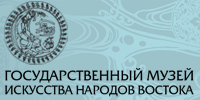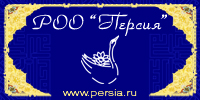 A photo essay by Yuri Kaver, devoted to Sinai, opens this issue.
A photo essay by Yuri Kaver, devoted to Sinai, opens this issue.
Writings
Sergey Toroptsev. Patterns of Heaven and Earth. The article subtitled "Cosmism in Li Bo’s Poetry" is accompanied by new translations made by the author.
Maria Toropygina. Japanese Comics of the 18th Century. The author tells about comics-like popular editions of the Edo period and presents a portion of the "Pleasure Quarter Near Shuten Doji" translated into Russian.
"Reflection" is a new section of the journal, the aim of which is to show the differences in presentation of the same realities by artists of the East and the West. The first publication of this cycle shows Khubilai Khan’s turn-out in a wooden chamber.
Dmitry Voskresensky. The West as Seen by a Chinese Diplomat. The author tells about the first steps taken by the Chinese in "discovering" the West, reflected in the notes of a Chinese diplomat.
Arkady Zazulinsky. Palestinian Springs. The author, who works for the Israel Antiquities Authority, presents the results of his intriguing quest, which started from a poem by Russian author and a drawing by French artist.
The Land of Orient
Nikolay Listopadov. A Kingdom Beyond the Himalayas. The author describes his journey to Mustang, a remote and little known kingdom in Nepal.
Alexander Mescheryakov. Japanese Emperor and Russian Tsar: Physical Functions. A comparative study of activities practiced by the rulers who represent the cultures so different from each other, allows better understanding of the specific features of each culture.
Svetlana Ryzhakova. Gods, Spirits and Saints of Shola Pith. The ritual items, used by the villagers in Northern Bengal in their rites, enable the author to present the development of religious culture of the Rajbansi people.
Ilya Zaytsev. The Khans of Crimea: Portraits and Plots. The realm of the Crimean Khans (15th - 18th century) made a considerable contribution to Osmanic art, which can be seen through portraits of the Khans of Crimea presented by the author.
Mikhail Karpov. The Dust of Old Beijing. What is "Old Beijing" and what was it like? Did it really became "new" and where lies, in this case, the border between the first and the second? These are the questions that occupy the mind of the author when he depicts this city in various periods.
Alexander Yurchenko. Divine Wind. The author thinks that the legends of the bird Rukh are in fact compiled from the fragments of various myths.
Sergei Kukushkin, Nikita Sokolov. The Correct Sounds for the Instruction of the People. Some of the living and ancient writing systems have the features that can be called ideal. What is an "ideal alphabet" and which writing systems can be considered perfect - such are concerns of the next article in the series, which was started in No.1/2003 with an essay "A Hermit Who Draws Sounds".
Marina Mongush. Bodgo Gegen Known and Unknown. The history of Bogdo Gegens, the highest Buddhist authority in Mongolia and adjacent countries, dates back to the 17th century. The author interviewed the present Bodgo Gegen, Jebtzundamba Khutukhtu IX who now lives in India.
Irina Glushkova. Eyes to Rama! For centuries the ancient Indian epic "Ramayana" has been dramatised and retold in regional versions. Shashi Tharur, a contemporary Indian writer, looks at modern life in the light of "Ramayana".
Olga Bibikova. A Dress for All Times. The article, accompanied by many images, traces the development of Arabic dress.
Ruslan Nadezhdin. Afghan Dastarkhan. The cuisine of Afghanistan absorbed the recipes of neighbouring peoples.
The «Orientnet» heading is not just a kind of guide-book on Internet resources about the Orient but also an opportunity to exchange information. Please mail (email) your wishes, suggestions and comments to the following address: orientnet@rsl.ru






